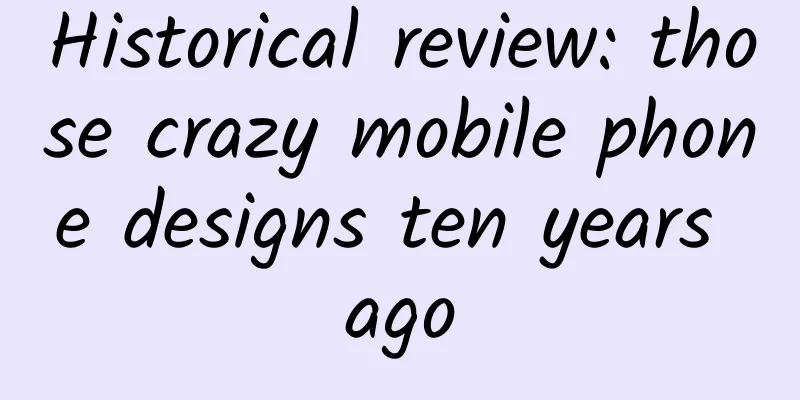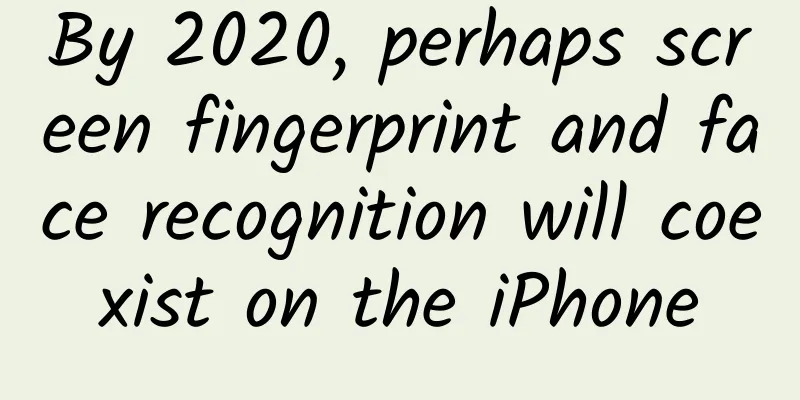Historical review: those crazy mobile phone designs ten years ago

|
[51CTO Translation] With the announcement of the new generation of iPhone, let us look back at what crazy designs manufacturers came up with ten years ago when this milestone smartphone had not yet come out. Today, just one year is enough for smartphone technology to usher in a rapid development. In view of this, we might as well take a relaxed attitude to review the mobile phone design ideas of the past ten years and see what kind of results manufacturers have come up with in the face of the topic of "future mobile phones" during that era. Let's take a look back at history and see the prototypes of these future mobile phones that were unveiled at the ITU Asia Telecom Show held in Busan, South Korea in September 2004. Samsung Satellite TV Mobile It may seem incredible now, but watching satellite TV directly on your phone was exactly what Japanese and Korean engineers were aiming to achieve. Broadcast via a custom satellite, the service was designed to help users watch TV programs anytime, anywhere without the shackles of bulky TV equipment at home. Samsung's SCH-B100 had a flip screen that could be used not only to display TV programs but also to play two hours of MPEG4 recorded videos saved to a memory card. The service offered 14 channels and cost $11 per month. It was successful for a while, but was later defeated by free TV programs and online video viewing services. In Japan, the service never gained widespread acceptance. Pantech Body Temperature Measurement Mobile Phone If you think swiping left and right on a clumsy smartwatch looks a bit strange, then you must have never seen the Pantech G670 phone that was unveiled at the show. This phone is equipped with a temperature measurement sensor on the back, and the user must pick up the phone and press the back of it to the forehead to complete the temperature measurement. This operation method is really vivid - either you have a fever or you are crazy. NTT DoCoMo Fuel Mobile Phone Charger In fact, mobile phone users at that time also faced the same problem as today - the mobile phone power was always insufficient. NTT DoCoMo believed that portable fuel cells were the best answer to this problem, that is, using a little methanol to provide the necessary power supply for mobile phones. Their idea was to sell these small methanol "cartridges" in convenience stores. When the mobile phone power was in urgent need, people could connect it to the charger, drip a little methanol and wait for the device to recover power. At that time, fuel cells were regarded as the most ideal portable charging solution for mobile phone and laptop PC users because this type of power generation mechanism can work instantly. This charger has never been officially launched on the market, but some manufacturers continue to pursue the improvement and promotion of fuel cell technology. Samsung hard drive mobile phone Apple's new iPhone 6 offers up to 128GB of storage, and just this week SanDisk announced a 512GB SD card. Considering all this, we can imagine how proud Samsung must have been when it unveiled this one-of-a-kind phone in 2004 - yes, a phone with a hard drive! The SPH-V5400 was only available in Korea and offered a then-astonishing 1.5GB of storage. The phone also had an FM transmitter so that music stored on its hard drive could be beamed over the airwaves to a radio. LG Blood Glucose Monitoring Phone Another phone that combines phone and medical functions is LG's KP8400. It has a built-in sensor that can measure the user's blood sugar status. People need to drop blood on a blood sugar test strip, which is then sent to a reader embedded in the flip phone via a slide. After a few minutes, the phone will display the user's blood sugar reading on the screen. LG has even added a corresponding device to upload the blood sugar data to an online database through the phone's GPRS connection. Pantech Gaming Phone It was a gaming device! No, it was still a phone. Whatever its purpose, Pantech’s PH S-3500 left an irreplaceable mark on the history of mobile phones. It had a circular keyboard that took a while to get used to, especially when it came to texting. It also had a 2.1-inch color TV screen and 3D graphics chips—all of which were rare at the time. Unfortunately, just three months later, Sony released the PlayStation Portable, also known as the PSP. Poor Pantech had no chance of resisting the historical trend that was changing the gaming industry. Original link: The crazy cellphone ideas of 2004 Nuka-Cola Translation |
<<: WeChat 5.5 is coming! O2O highlights: card wallet and micro POS
>>: TalkingData's third anniversary brand strategy conference was held in Beijing
Recommend
Is calcium carbonate toothpaste harmful to teeth?
As an oral care product, the safety of toothpaste...
APP operation: How to efficiently recall users and achieve an ROI of more than 500%?
Many people are using recall campaigns to retain ...
Marketing and promotion skills | The marketing behind the crazy rush for Uniqlo’s co-branded T-shirts!
Recently, the Kaws x Uniqlo co-branded T-shirts w...
New blood test method: A sharp eye for identifying Alzheimer's disease
Author: Duan Yuechu A new blood test could help d...
Samsung GALAXY Alpha review: metal frame feels great
In previous rumors, Samsung GALAXY Alpha has alwa...
Toutiao’s passive traffic and customer acquisition method, here are the tricks!
There is a saying in the Internet circle: "I...
New Toutiao traffic strategy
Recently I found that some friends wanted to attr...
Measuring wind, clouds and rain, how capable is weather radar?
Author: Haiyueming Studio Weather radar and weath...
Data-driven operations: Here are 7 classic ideas! !
1. Decomposition ideas When doing data analysis f...
Unlock advanced methods of operating WeChat public accounts!
In addition to the conventional gameplay, what el...
Cows infected with avian influenza, how did the influenza virus become a demon? | Virus Super Topic
"There is a fish in the North Sea, named Kun...
This time, it’s not just about going to the North Pole! Chinese scientists realize their dream of reaching the North Pole!
If someone has visited the North Pole and checked...
A case lesson from the O2O market: How startups balance branding and operations!
Recycling, a familiar yet unfamiliar term, is an ...
Why do others get three times as many clicks as you when doing the same information flow advertising?
Let’s look at an example first. A stock trading s...









